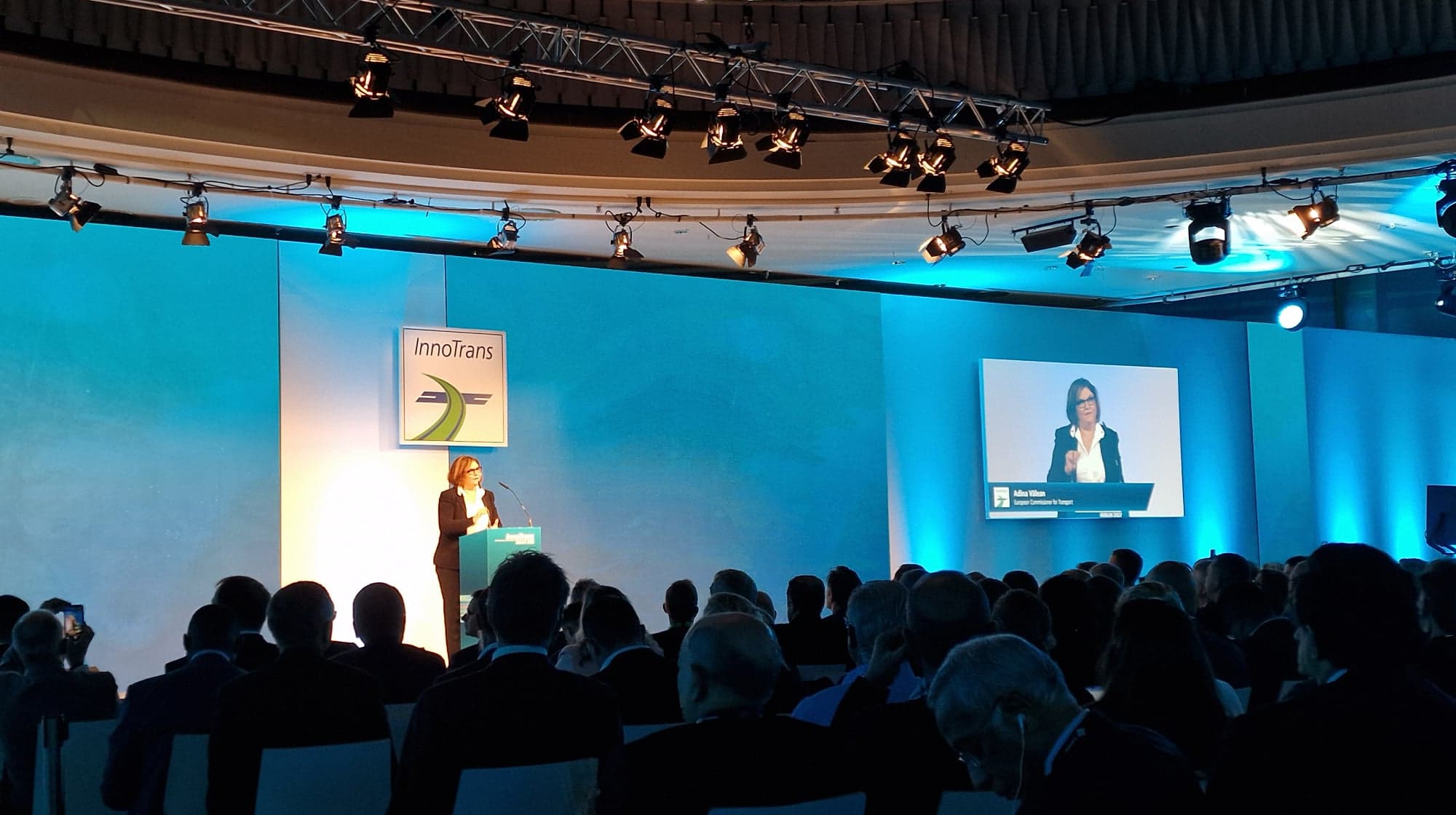 “Rail is a growing sector, which is confirmed by Unife’s World Rail Market Study that forecasts a 3% growth every year until 2027. The future is promising but we must look where we are with rail today,” Adina Vălean, the European Commissioner for Transport said at InnoTrans opening ceremony. The Commissioner explained that the rail services and the infrastructure need to be improved to cut the journey times in order to attract more passengers, while contributing to the reduction of emissions. “I couldn’t take the train from Brussels to Berlin because a 7-hour travel time on a 750 km distance is too long and doesn’t fit in my tight schedule. Rail suffered from a lack of interested investment and no amount of public subsidies or EU measures to support competition can compensate for a lack of a decent rail system. For some time now, some Member States have accepted lower performance and poor service. We’ve seen poor maintenance, insufficient investment in equipment and rolling stock, poor implementation of EU legislation as well as no or slow progress on interoperability issue across the single market.
“Rail is a growing sector, which is confirmed by Unife’s World Rail Market Study that forecasts a 3% growth every year until 2027. The future is promising but we must look where we are with rail today,” Adina Vălean, the European Commissioner for Transport said at InnoTrans opening ceremony. The Commissioner explained that the rail services and the infrastructure need to be improved to cut the journey times in order to attract more passengers, while contributing to the reduction of emissions. “I couldn’t take the train from Brussels to Berlin because a 7-hour travel time on a 750 km distance is too long and doesn’t fit in my tight schedule. Rail suffered from a lack of interested investment and no amount of public subsidies or EU measures to support competition can compensate for a lack of a decent rail system. For some time now, some Member States have accepted lower performance and poor service. We’ve seen poor maintenance, insufficient investment in equipment and rolling stock, poor implementation of EU legislation as well as no or slow progress on interoperability issue across the single market.
The Commissioner mentioned that Brussels is committed to develop the rail sector which will help achieving the EU Green Deal’s goals. This is the reason why the Mobility Strategy is focused on rail transport that will help this sector to reduce its carbon footprint and contribute to the EU’s climate neutral objective for 2050. In addition, this transport mode will contribute to the consolidation of the single market by providing better cross-border connections. “From our side, the proposal to revise the TEN-T Guidelines will improve the cross-border rail infrastructure and Europe’s main railway lines. We want to have our European capitals connected by high-speed rail links. The Resilience and Recovery Facility and the structural funds can be used to modernise the infrastructure and rolling stock,” Vălean explained.
In December, the EC has presented its action plan on long distance rail passenger transport and in 2023 it expected to present an initiative to improve cross-border capacity management as well as solutions for integrated multimodal long distance passenger tickets. “Passengers want easier ticketing with sufficient safeguards to consider using the train more frequently”.
By developing the rail sector, introducing new technologies and providing better services, the EC expects to increase rail freight traffic by 50% by 2030 then double it until 2050, while doubling the high-speed rail transport by 2030 and triple it by 2050.
Share on:



